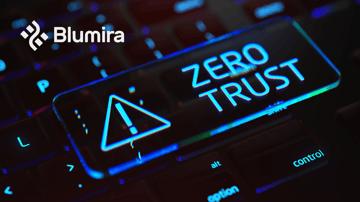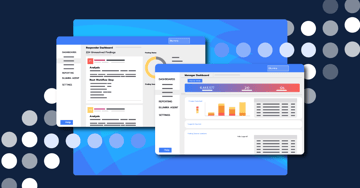Plus, Max, Premium, Super Deluxe – Words are important when it comes to signaling that the new and improved version of a product is better, stronger, or faster. And so it is with XDR. Extended detection and response already sounds like a more comprehensive cybersecurity solution compared to endpoint detection and response (EDR). And in fact, XDR is defined as a holistic approach to threat detection, investigation, and response across multiple security layers, including endpoints, networks, logs, and cloud environments.
XDR solutions have been a popular approach to IT security since they emerged around 2018. They promise to employ advanced analytics to detect and identify sophisticated threats by correlating data across different sources, thus enhancing an organization’s ability to detect and respond to threats that may traverse multiple layers of the IT environment. In short, XDR users expect a higher level of vigilance and a ton more information about potentially damaging threats. Sounds deluxe.
But not all XDR solutions are the same. With some platforms that use the XDR label, there can be a gap between promise and reality. Recently Matt Warner, chief technology officer at Blumira, discussed four myths about XDR platforms – common perceptions that IT teams often have when looking for ways to upgrade their security posture. Understanding the truth behind these myths can help you understand the benefits and limitations of XDR:
Myth #1: XDR automatically improves detection
If you’ve been working in IT for any amount of time, you know that wishful thinking is not a sensible cybersecurity strategy. When XDR came on the scene, it was primarily a packaging concept for cybersecurity vendors used to bundle existing products. As Matt explains it, “Companies were primarily focused on threats happening at the endpoint. They figured if they could correlate data from multiple endpoints, it would be moderately more usable, and the solution could be sold as a package.'”
However, simply consolidating data doesn’t necessarily improve detection or make response faster. You could end up with enormous amounts of important and possibly critical data, but without strong analytics and purpose-built workflow automation, it’s not possible to truly improve outcomes. Many XDR platforms still rely on manual processes, crowded dashboards, and siloed workflows that don’t enhance efficiency.
Myth #2: The endpoint is everything
“XDR tools tend to over-index on endpoints as the be-all, end-all for detection,” says Matt. This neglects the fact that attacks are increasingly leveraging more than just an endpoint. Compromised business email, misuse of cloud app permissions, and vulnerable internet-facing systems are all potential targets. It’s now urgent for XDR to expand beyond endpoints, and for businesses to get serious about the services they’re using. Cyber criminals know where the vulnerabilities are, and they’re going after every one of them.
Myth #3: MDR will fix your staff shortages
XDR can feel overwhelming for small IT teams, so it may seem logical to outsource security monitoring to a managed detection and response (MDR) service. After all, the cybersecurity talent shortage is still making it difficult to recruit, hire, and compensate skilled experts. But outsourcing introduces its own set of risks since MDR analysts lack the internal context of the businesses they’re charged with monitoring. And, according to Matt, “The reality is that you don’t know who your tier-one analyst is, and it’s often a very high churn job.” Though MDRs can play a role, relying solely on external staffing is not a scalable or sustainable model.
Myth #4: XDR is too hard to manage internally
You can equip your internal IT team with XDR technology that centralizes data collection across your entire environment, but your solution should include built-in analytics that enhance detection, and automation for fast response. As you evaluate XDR solutions, look for one that’s tuned to reduce noise, prioritize findings, and enable autonomous responses. The support you receive with your XDR solution is vital – you need experts you can rely on who are actively engaged in threat hunting and available 24/7 to assess threats and provide guidance.
Blumira is a SIEM-based XDR platform that’s purpose-built for small and medium-sized businesses (SMBs), government, and organizations. The Blumira approach combines extended detection and response with security information and event management (SIEM) to provide a unified data pipeline that collects logs from across your stack; automatic scalability and updates; pre-built reports for compliance; response playbooks with every alert; and rapid deployment so you can get your security program up and running quickly.
Look beyond the XDR myths to make sure your cybersecurity solution works for your team and your organization. Learn more about Blumira XDR, or get the free Blumira SIEM and try it out for yourself.
More from the blog
View All Posts
Implementing Zero Trust Using the NIST Cybersecurity Framework
Read More
Navigating the Complex XDR Landscape: A Guide for SMBs
Read More
Nick Brigmon of Blumira on Cybersecurity Insights for Libraries
Read MoreSubscribe to email updates
Stay up-to-date on what's happening at this blog and get additional content about the benefits of subscribing.